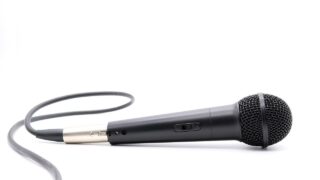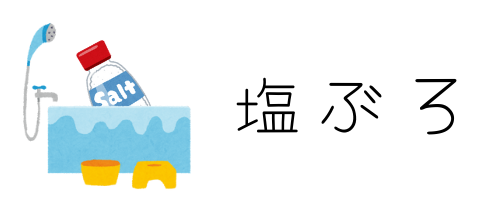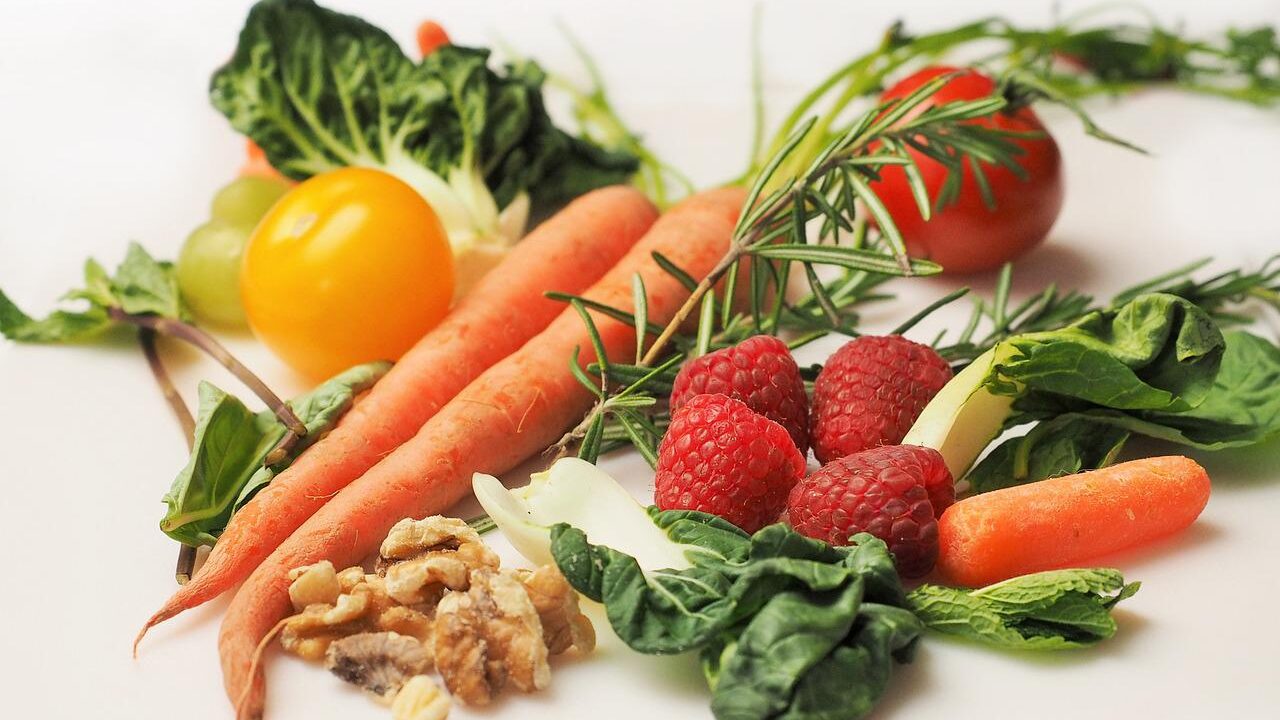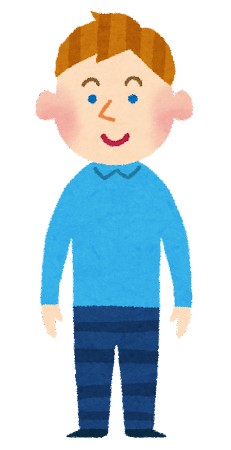ライフハックとしてではなく、英語学習にも極めて有用なのが、著名人が10分程度のプレゼンを行うTEDです。
TED Talksとは、あらゆる分野のエキスパートたちによるプレゼンテーションを無料で視聴できる動画配信サービスのことです。10年ほど前にサービスが開始されてから、政治、心理学、経済、日常生活などの幅広いコンテンツが視聴できることから人気を集めています。
RareJob English Lab
TEDは4000を超える膨大な数の動画があります。しかし慣れないうちは、動画の探し方や視聴のコツが分かりませんよね。この記事では、数多くのTEDを見てきた管理人(塩@saltandshio)が、心を揺さぶられたトークをあらすじと一緒にご紹介します。
ビジネス英会話を効率よく身につけたい方におすすめスクール
シェーン英会話
シェーンは1977年の創業以来、ネイティブ講師が英語を英語で教える「直接教授法」を採用しています。首都圏におけるスクール拠点数は、ネイティブ講師の英会話スクールでNo.1。駅から近いスクールが多いので通いやすく時間を有効に使えます。
スピークバディ パーソナルコーチング
1日1時間の短期集中トレーニングで、あなたの英語力向上をコーチが全力でサポートします。あなたの英語の世界が、劇的に変わります。
脳にいい最強の食べもの:ニール・バーナード
ニール・バーナードは、最新の研究結果を紹介しながら、食品が脳に与える驚異的な影響に関して説明します。さらに、心の働きや記憶力を向上させるための簡単な3つのステップを推奨します(約17分)。
[PR]無料体験レッスン実施中!全国208校、創業40年の老舗英会話スクール【シェーン英会話】認知症を発症する人の特徴と発症を高める食べ物
だいぶまえから、最良の人生の終わり方として『ピンピンコロリ』を望む高齢者が増えてきました。
ピンピンコロリとは、健康寿命の長さを言い表した表現で、「病気に苦しむことなく、元気に長生きし、最後は寝込まずにコロリと死ぬこと、または、そのように死のう」という標語。対義語として、寝たきりで長く生きるという、ネンネンコロリがある。
Wikipediaより
高齢者に限らず、物忘れは何歳であっても避けて生きたいものです。ニール・バーナードの父親は、アルツハイマー病にかかったのちに、さいごは子供のことも忘れて自分の世話も出来なくなり亡くなりました。大切な人の記憶が消え去ってしまうアルツハイマー病ですが、いったいどのような病気なのでしょうか。
患者さんの脳を見てみると、健康な人の脳にはない独特な構造の脳細胞があることが知られています。アルツハイマー病は、アメリカ人の約半数が80歳半ばまでに発病されるといわれています。この病気の遺伝子を片方の親から受け継ぐと発症リスクが3倍になり、両親から受け継いだ場合はリスクは10〜15倍になります。では、親がアルツハイマー病の遺伝子持っていた場合、この病気は避けがたいものなのでしょうか。
シカゴ市民の食事を調査しました。何百人分もの食事の記録を入念に集めました。年月が経過するにつれて、認知症を発症する人としない人が出てくるのに気付きました。
What they did was they looked at what people in Chicago were eating. They did very careful dietary records in hundreds and hundreds of people, and then they started to see who, as the years go by, stayed mentally clear, and who developed dementia.
調査の結果、肉類・ベーコン、チーズなどを油脂を多く含む食事を摂っている人達は、アルツハイマー病の発生リスクが2倍、3倍になることがわかりました。この油脂は、ドーナツや菓子パンに含まれる油脂も含みます。
軽度認知障害(普通に生活できる状態だが、徐々に脳機能が衰える状態)も、ニール・バーナードの研究チームの調査結果によると、飽和脂肪やトランス脂肪を多くとっている人ほど発症リスクが高いという結果が出ています。つまり、悪い脂肪が記憶障害を起こす一因になっているのです。
悪い脂肪は脳に悪影響を及ぼすことがわかりましたが、調査を続けていく中で興味深い結果も出ました。なんと、たとえアルツハイマー病の遺伝子を持っていたとしても、悪い脂肪を取り入れなければ、発症リスクが80%下がることが判明したのです。
これは最も重要なポイントです。遺伝子で運命は決まりません。
And this is my most important point: genes are not destiny.
悪い脂肪のほかにも、最近の調査では鉄分を多くとり過ぎても脳に悪いということがわかっています。では逆に、脳を健康に保つためにはどうすればいいのでしょうか。
[PR]まずは無料カウンセリング”続けるため”の オンライン英語コーチ「スピークバディ パーソナルコーチング」ビタミンEは脳の救世主
体の中で燃える悪い脂肪を消す消火器として注目されているのは、ビタミンEです。ビタミンEは、ほうれん草やマンゴーに多く含まれます。ナッツや種子類には特に豊富に含まれています。そんなビタミンEの素晴らしい点は、抗酸化物質だということです。
ニール・バーナードたちの研究の結果、1日8ミリグラムのビタミンEを摂る人は、摂取量が少ない人に比べてアルツハイマーを発症するリスクが半減することがわかりました。しかし、ビタミンEが脳に良いからといっても、サプリメントで摂取するのはオススメできません。
なぜなら、自然界にはビタミンEが8種類あり、ナッツ類からはそれらをまんべんなく摂取することが出来ますが、サプリメントではそのうち1種類しか摂ることが出来ないからです。サプリメントの問題はほかにもあります。1種類のビタミンEばかり摂取していると、他のビタミンの吸収を妨げてしまうのです。
だから食品から摂るほうがいいのです。自然のデザインはそういうビタミンEの形になっていました。そんな形とともに人間は進化してきたのです。
So, you want to get it from food; that’s the form that nature
has designed for us, and that’s the form that we’ve evolved with.
摂取するナッツの量ですが、てのひらにのるくらいの量(約28g)を粉々に砕き、サラダやパンケーキなどに混ぜて食べると良いとニール・バーナードはすすめています。
[PR]全国1400教室の子ども英会話教室【ペッピーキッズクラブ】色鮮やかな野菜や果物に惹かれるワケ
ほかにも脳に良い食材として、ブルーベリーやブドウが良いとニール・バーナードは言います。具体的にはアントシアニンという成分です。記憶障害を患う平均年齢78歳のグループを対象に、1日500ミリリットルのぶどうジュースを朝と夜の2回に分けて毎日飲んだところ、3ヵ月後にはなんと彼らの記憶に関する能力が大きく改善したのです。
ぶどうの紫色、つまりアントシアニンがビタミンEのように強力な抗酸化物質なのです。ぶどうに含まれる形の抗酸化剤です。食べると血流に入ります。
それが事実ならぶどうである必要はありません。同じ色素であればいいのですから。ブルーベリーでもいいのです。
That purple color, those anthocyanins happen to be powerful antioxidants, just like vitamin E, but they’re the grape form, and if you consume them, they go into your bloodstream.
And if that’s true, it doesn’t have to be grapes, it could be anything that has that color. Like blueberries.
私たちがスーパーに入った時、まず目が引かれるものはなんでしょうか。それは、色鮮やかな野菜ではありませんか?ニンジンのオレンジ色、トマトの赤い色、そしてブドウの紫色……。それらにはベータカロチンやリコピン、アントシアニンという成分が含まれています。じつは脳は、瞬時にこれらの色彩が美しく魅力的だと認識しているのです。
これはつまり、抗酸化物質を無意識のうちに識別して惹きつけられているのです。これらのことから
- チーズ、ベーコン、肉などに含まれる飽和脂肪を避ける
- トランス脂肪やスナック食品を避ける
- ビタミンEや色の鮮やかな食品を摂る
こうしたことを普段の食生活で心がければ、私たちの脳環境はかなり改善することがわかったのです。
[PR]しちだの魔法ペンなら35日でバイリンガルに!楽天4部門1位の英会話!<七田式>食べ物だけでなく体を動かすことも大切
食生活のほかにも、大切なことがあります。それは、適度な運動です。イリノイ大学が120人の成人を対象に行った調査によると、週に3回、早足で散歩をしてもらったところ、加齢とともに進行する海馬の縮小が止まったことがわかりました。
海馬は神経細胞の結合をつくる役割を果たしていると言われ、短期記憶から長期記憶へと情報をつなげる中期記憶を担う器官です。日常的な出来事や学習して覚えたことは、いったんこの海馬にファイリングされ整理整頓してから、大脳皮質という部分へ保存されていきます。つまり記憶を仕分ける司令塔なのです。
「海馬」は記憶の必殺仕分け人? ~脳科学で記憶の仕組みを解明~(国立はこだて未来大学)
その後の調査で、運動する人は海馬が少しずつ大きくなり、そのうち縮小現象が逆転したのです。この結果により記憶テストの成績も目に見えて改善されました。こうした結果をもとに、イリノイ大学は人々に簡単な運動を提案しています。
10分間の散歩を週に3回して下さい。そして次の週は15分、その次の週は20分、こうやって40分になるまで週に5分ずつ増やしていきます。40分間早足で散歩しますが、だらだらと歩かずサッサと歩きます。
週に3回40分間散歩するだけで、記憶が改善し脳の収縮現象が逆転します。
Do a ten-minute walk, and do it three times a week. And then, next week, let’s do a 15-minute walk, and the week after that, 20. All they did was add five minutes a week until they got to 40 minutes.
And a 40-minute brisk walk this is not a trudge, but it’s a good brisk walk – 40 minutes, three times a week is all you need to improve memory and reverse brain shrinkage.
こんなシンプルな方法で、脳の老化を防止できるならいいですね。散歩の効果については、マリリー・オペッゾもTED Talksで話していましたね。

まとめ:大切な人と長く過ごすために今日からできることをしよう
ニール・バーナードは、時間をさかのぼって「父にチーズやベーコンをやめて、色鮮やかな野菜や果物を食べよう。運動靴を履いて一緒に体を動かそう」と伝えたいと言います。しかし、それはもう出来ません。だからこそ、聴衆にむかって切実に語り掛けます。
でも、あなたはまだ間に合います。私もまだ間に合います。脳を守るために何をすべきか、今日学んだことを実行するならば、家族がもっと長い時間を一緒に過ごすことができるでしょう。
But it’s not too late for you. It’s not too late for me either, and if we take advantage of what we have now learned about how we can protect our brain, then perhaps, families will be able to stay together a little bit longer.
あなたの普段の食生活はどうでしょう。脳に良い食事をしていますか?適度な運動を行っていますか?今日から普段の生活を見直せば、きっと未来は充実した毎日を過ごせることでしょう。
英語全文
Thank you for joining me. On February, 8, 2012, my father passed away. The truth is that was the day his heart stopped beating. For all intents and purposes, my father had died years earlier. It started with memory lapses, and as time went on, his memory failed more and more, and it got to the point where he didn’t know his own kids who came in to see him.
<全文を読む>▼クリック▼
Beta-amyloid protein comes out of the cells, and it accumulates in these little meatball-like structures that are in front of you, on a microscopic slide. They shouldn’t be there, and they are a hallmark of Alzheimer’s disease. This disease affects about half of Americans by their mid 80s.
You could say to your doctor, “OK, I don’t want that. What can I do to stop that?”
Your doctor will say, “Well, its old age and it’s genetics.” There’s a gene – it’s called
the APOE-[epsilon]4 allele. If you have this gene from one parent, your risk is tripled; if you got it from both parents, your risk is 10 to 15 times higher than it was before. What’s the answer? Get new parents?
No, I don’t think so. That’s not it.
So, I’m sorry: it’s old age, it’s genes, period, that’s it; there’s not a darn thing you can do just wait for it to happen. Or maybe not. In Chicago, researchers started something called the Chicago Health and Ageing Project. What they did was they looked at what people in Chicago were eating.
They did very careful dietary records in hundreds and hundreds of people, and then they started to see who, as the years go by, stayed mentally clear, and who developed dementia. The first thing they keyed in on was something that I knew about as a kid growing up in Fargo, North Dakota – My mom had five kids, we would run down to the kitchen to the smell of bacon. My mom would take a fork, and she’d stick it into the frying pan and pull the hot bacon strips out and put them on a paper towel to cool down, and when all the bacon was out of the pan, she would carefully lift up that hot pan and pour the grease into a jar to save it – that’s good bacon grease, you don’t want to lose that! My mother would take that jar, and she would put it not in the refrigerator but she’d put it on the shelf, because my mother knew that as bacon grease cools down, what happens to it?
It solidifies.
And the fact that it’s solid at room temperature is a sign that bacon grease is loaded with saturated fat, bad fat. We’ve known for a long time that that raises cholesterol, and there’s a lot of in bacon grease. And by the way, the next day, she’d spoon it back into the frying pan and fry eggs in it; it’s amazing any of her children lived to adulthood. That’s the way we lived.
The number one source of saturated fat is actually not bacon, it’s dairy products, cheese, and milk, and so forth; and meat is number two. In Chicago, some people ate relatively little saturated fat, around 13 grams a day, and others ate about twice that much, and the researchers just looked at who developed Alzheimer’s disease. And can I show you the figures? Here’s the low group, and there is the high group. In other words, if you are avoiding the bad fat, your risk was pretty low, but if you were tucking into the cheese and the bacon strips, your risk was two, three, or more-fold higher,
Then they looked not just at saturated fat, they looked at the fat that’s in doughnuts and pastries; you know what that is, that’s trans fats you’ll see on the labels. They found the very same pattern in there, too. So, the people who tended to avoid the saturated fat and the trans fats, wanted to avoid them for cholesterol and heart disease reasons, but they also seem to affect the brain.
Then researchers in Finland said, “Wait a minute, let’s go further.” There is a condition we call mild cognitive impairment. You’re still yourself – you’re managing your checkbook, you’re driving, your friends know it’s you – but you’re having mental lapses, especially for names and for words. They brought in over 1,000 adults, they were 50 years old, and they looked at their diets. Then, as time went on, they looked to see who developed mild cognitive impairment. Some of these people ate relatively little fat, some people ate a fair amount, and then they looked at whose memory started to fail. They found exactly the same pattern. In other words, it’s not just, “Will I get Alzheimer’s disease?” but, “Will I just have old age memory problems?” Well, what about that gene, that APOE-[epsilon]4 allele the one that condemns you to Alzheimer’s disease?
Well, they then redid the study, and they focused only on those people, and some of these people ate relatively little fat, some people ate more, and — …Exactly the same. In other words, if you are avoiding the bad fats, even if you have the gene, your risk of developing memory problems was cut by 80%.
And this is my most important point : genes are not destiny.
Let’s take another look in those plaques. We know there’s beta amyloid protein , but there’s also iron and copper. Metals in my brain? That’s right, there are metals in foods, and they get into the brain. Now think about this: I have a cast-iron pan, and we had a backyard barbecue, and a week later, I remember, “Oh… I left my frying pan on the picnic table, and it rained last week.” What happened to my pan? It rusted, and that rust is oxidation. Or you take a shiny new penny, and does it stay shiny forever? No, it oxidizes too. Well, iron and copper oxidize in your body, and as they do that, they cause the production of what are called free radicals. You’ve heard of free radicals: free radicals are molecules that are swimming around in your bloodstream, and they get into the brain, and they act like sparks that seam through the connections between one cell and the next.
So, how is this happening? Where am I getting all this iron? Where am I getting all this copper? How can that be? How many people have a cast iron pan? Let me see hands. If that’s your once a month pan, I’m going to say, “Who cares?” But if it’s every single day, you’re getting the iron into your food, and it’s more iron than your body needs. Or copper pipes. Who has copper pipes? That water sits in the copper pipes all night long, and in the morning it goes into the coffee maker, and you’re drinking that copper, you get more than you need, and it starts producing these free radicals that go to the brain.
If you’re a meat eater, of especially liver, there’s iron and copper in those foods too. And we used to think, “Isn’t that great?” until we realized iron is a double-edged sword. You need a little bit, but if you have too much, it becomes toxic. Vitamins. Vitamin manufacturers put in vitamin A, and the B vitamins, and vitamin C, and vitamin D. And then they throw in iron and copper, thinking, “Well, you need these,” not recognizing you’re already getting enough in foods, and if they add it to your supplement, you are getting too much.
OK, so what am I saying?
What I’m saying is aside from the fact that the saturated fat and the trans fats will increase our risk, these metals will, too, and they are causing sparks to form in the brain, free radicals to form that seam through the connections. And if that’s the case, then I need a fire extinguisher. And we have one, and it’s called vitamin E. Vitamin E is in spinach, and it’s in mangoes, and it’s especially in nuts and seeds. And in Chicago, some people eat a little bit of it, and some people eat a lot of it, and the beauty of this is vitamin E is an antioxidant: it knocks out free radicals. So, if what I’m saying is true, then the people in Chicago who ate only a little bit of vitamin E would be at much higher risk than people who ate a lot, and that’s exactly what the research showed.
People getting eight milligrams a day of vitamin E cut their risk of Alzheimer’s by about half compared to people getting less than that. Hmm, OK, how do I get that? It’s very, very easy: run to the store and just buy a bottle of vitamin E pills. No, I don’t think so, and here’s why not. Nature has eight forms of vitamin E. It’s built into nuts and into seeds, but if I put it into my supplement pill, I can legally call it vitamin E if it has only one form. And if you’re eating too much of one form of vitamin E, it reduces your absorption of all the others. So, you want to get it from food; that’s the form that nature has designed for us, and that’s the form that we’ve evolved with.
We can go a step further.
Oh, by the way, I forgot to tell you. How much should I have? If I put some nuts or seeds into the palm of my hand, by the time it hits your fingers, that’s just one ounce, and that’s about five milligrams of vitamin E, right there. The trick is: don’t eat it; because if you do, you know what happens. If you have those diced salty almonds, and you’ve eaten them: you fill your hand again, and then you eat it again. There’s something about salty cashews and almonds, is it just me? There’s something about them, they’re a little bit addicting in some way. So, don’t do that, that’s going to be way more than you need.
The answer is pour them into your hand,
and then crumble them up, and put them on your salad, or put them on your oatmeal, or on your pancakes, or something. Use them as a flavoring not as a snack food, then you’re going to be OK.
All right, researchers at the University of Cincinnati went one step further. Not just saturated fat, not just trans fats, not just vitamin E, but they said, “What about color?” Look at blueberries and grapes: that color that they have is dramatic. And the colors of blueberries aren’t just there to make them pretty, those are called anthocyanins. They brought in a group of individuals into a research study: average age: 78, and everyone was already having memory problems. And what they asked them to do was to have grape juice, a pint a day. A cup in the morning, a cup at night. Three months later, they tested everyone, and their memory was better, and their recall was better.
Three months?
That sounds too easy. How can that be? Well, think about it: a grape has a rough life. A grape has to sit on the vine, all day long under the sun, and exposed to the elements, and it has no protection. Or does it? That purple color, those anthocyanins happen to be powerful antioxidants, just like vitamin E, but they’re the grape form, and if you consume them, they go into your bloodstream. And if that’s true, it doesn’t have to be grapes, it could be anything that has that color. Like blueberries.
So, back into the laboratory: a new group of patients, they came in, they all had memory problems. And three months on blueberry juice, Their memory was better,
their recall was better. Now, the moral of the story is not to have grapes and blueberries, and blueberry juice, and grape juice. No, the answer is color. If you look at the colorful foods, there’s an important lesson there for us. You walk into the grocery store, and from a hundred feet away, looking at the produce department, you can recognize beta-carotene, lycopene, anthocyanins. Your retina can detect them because that’s the orange color of a carrot, or the red color of a tomato, or the purple color of a grape. And the brain also tells you they’re pretty, they’re attractive, you can recognize antioxidants, you’re drawn to them.
So, back in 2009, my organization, the Physicians Committee for Responsible Medicine, went to the Department of Agriculture. We said, “This is important. Let’s throw out the pyramid.” The pyramid was a nice shape, but it had a meat group, and it had a dairy group, despite the fact that people who don’t eat meat or dairy products happened to be healthier than people who eat them. And also, who eats off a pyramid anyway? We eat off a plate. So, we devised a plate that said fruits, and grains, and legumes that’s the bean group – and vegetables, those should be the staples. Well, we gave this to the USDA in 2009, and we didn’t hear back from them. So, in 2011, we sued the federal government, the Physicians Committee filed a lawsuit against the USDA, simply to compel response. And did you see what the US government came out with in 2011? I’m not taking any credit for this, but this is now US government policy, it’s called MyPlate, and it does look in some way similar to what we’d sent them a couple of years earlier. Fruits, and grains, and vegetables, and they have this thing called ‘the protein group.’ The protein group could be meat, but it could be beans, or tofu, or nuts, or anything that’s high in protein, it doesn’t have to be meat. In fact, there is no meat group anymore in federal guidelines. There’s a dairy group there, but to their credit, soy milk counts. So, things are improving.
So far, what we’ve talked about is getting away from the saturated fats, that’s in cheese, and bacon, and meats; getting away from the trans fats and snack foods; you’re having the vitamin E and the colorful foods; and there’s one more step. It’s not all food, there’s something to say about exercise. At the University of Illinois, researchers brought in a large group of adults, 120 of them, and they said, a brisk walk, three times a week. After a year, everyone went into the laboratory for a brain scan. They measured the hippocampus which is at the center of the brain, and it’s the seat of memory: it decides what should be let through into memory, and what should not be let through. It turned out that this organ, which is gradually shrinking in older adults, suddenly, stopped shrinking. The exercisers found that their hippocampus
was a little bit bigger, and a little bit bigger, and a little bit bigger, it was as if time was going backwards: It reversed brain shrinkage, and on memory tests, they did substantially better.
So, I’ve devised my own exercise plan. I’d like to present it to you, I do this three times a week. Arrive at the airport as late as possible, carry massively heavy luggage, and just run for the plane. At the University of Illinois they had their own ideas, and their idea was a little simpler. Do a ten-minute walk, and do it three times a week. And then, next week, let’s do a 15-minute walk, and the week after that, 20. All they did was add five minutes a week until they got to 40 minutes. And a 40-minute brisk walk – this is not a trudge, but it’s a good brisk walk – 40 minutes, three times a week is all you need to improve memory and reverse brain shrinkage.
Very simple.
What I would like to do is to go back in time, and I want to sit down with my dad, and I want to say, “Dad, I found out something really important. We can change our diet, we don’t really need that cheese and that bacon. There’s plenty of healthy things that we can eat. Let’s bring in the colorful vegetables and fruits, let’s make them part of our everyday fair. Let’s lace up our sneakers, let’s exercise together.”
It’s too late for him.
But it’s not too late for you.
It’s not too late for me either, and if we take advantage of what we have now learned about how we can protect our brain, then perhaps, families will be able to stay together a little bit longer.
Thank you very much.
<閉じる>

\ ほかにも気になるトークが満載! /








